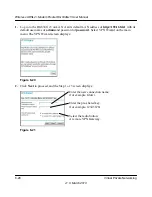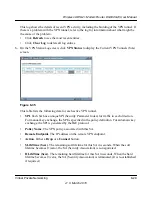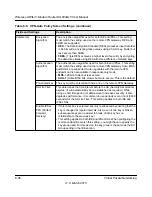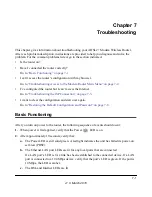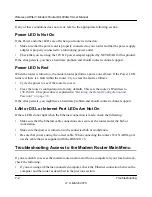
Wireless ADSL2+ Modem Router DG834Gv5 User Manual
6-34
Virtual Private Networking
v1.0, March 2010
Table 6-5. VPN-Auto Policy Screen Settings
Fields and Settings
Description
General
Policy Name
Enter a unique name to identify this policy. This name is not supplied to
the remote VPN endpoint. It is used only to help you manage the
policies.
Remote VPN
Endpoint
• The remote VPN endpoint must have this VPN gateway's address
entered as its remote VPN endpoint.
• If the remote endpoint has a dynamic IP address, select
Dynamic IP
address
. No address data input is required. You can set up multiple
remote dynamic IP policies, but only one such policy can be enabled
at a time. Otherwise, select an option (IP address or domain name)
and enter the address of the remote VPN endpoint to which you want
to connect.
IKE Keep-alive. • If you want to ensure that a connection is kept open, or, if that is not
possible, that it is quickly re-established when disconnected, select
this check box.
• The ping IP address must be associated with the remote endpoint.
The remote LAN address must be used. This IP address will be
pinged periodically to generate traffic for the VPN tunnel. The remote
keep-alive IP address must be covered by the remote LAN IP range
and must correspond to a device that can respond to ping. The range
should be made as narrow as possible to meet this objective.
Local LAN
The remote
VPN endpoint
must have these
IP addresses
entered as its
remote
addresses.
Subnet Mask
Enter the desired network mask.
Single/Start IP
Address
• Enter the IP address for a single address, or the starting address for
an address range. A single address setting is used when you want to
make a single server on your LAN available to remote users. A range
must be an address range used on your LAN.
•
Any
. The remote VPN endpoint may be at any IP address.
Finish IP
Address
For an address range, enter the finish IP address. This must be an
address range used on your LAN.

